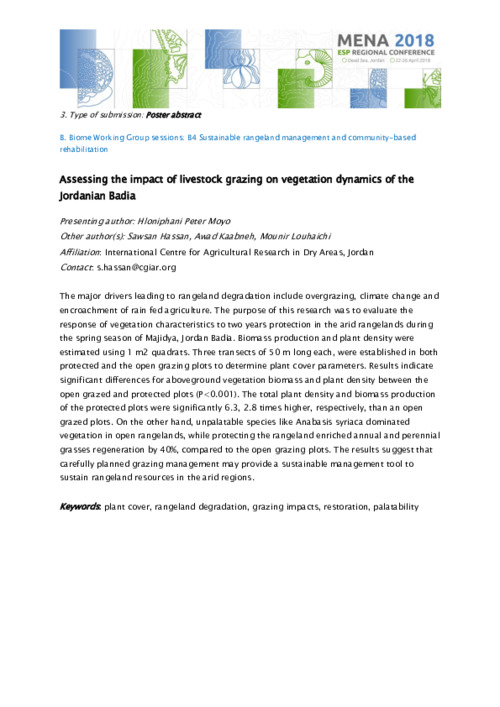Assessing the impact of livestock grazing on vegetation dynamics of the Jordanian Badia
Abstract
The major drivers leading to rangeland degradation include overgrazing, climate change and encroachment of rain fed agriculture. The purpose of this research was to evaluate the response of vegetation characteristics to two years protection in the arid rangelands during the spring season of Majidya, Jordan Badia. Biomass production and plant density were estimated using 1 m2 quadrats. Three transects of 50 m long each, were established in both protected and the open grazing plots to determine plant cover parameters. Results indicate significant differences for aboveground vegetation biomass and plant density between the open grazed and protected plots (P<0.001). The total plant density and biomass production of the protected plots were significantly 6.3, 2.8 times higher, respectively, than an open grazed plots. On the other hand, unpalatable species like Anabasis syriaca dominated vegetation in open rangelands, while protecting the rangeland enriched annual and perennial grasses regeneration by 40%, compared to the open grazing plots. The results suggest that carefully planned grazing management may provide a sustainable management tool to sustain rangeland resources in the arid regions

